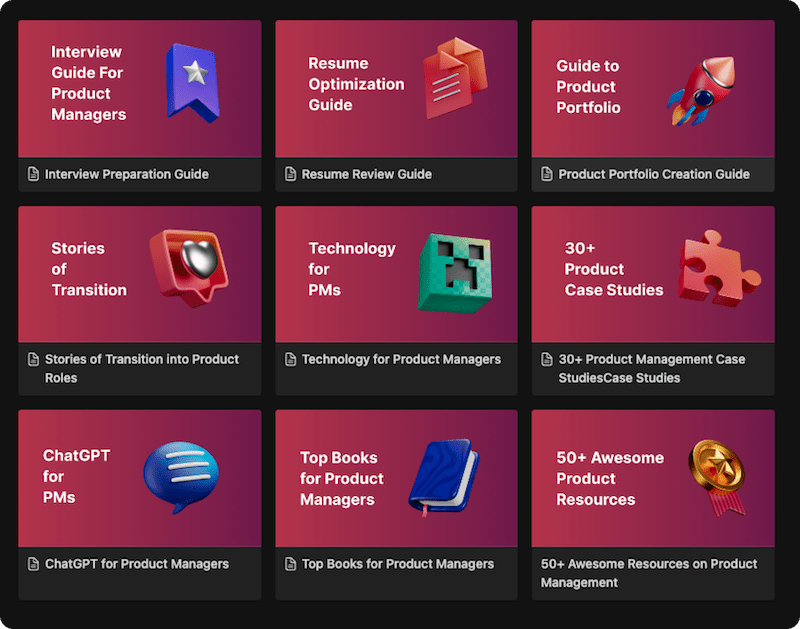As a product manager, have you ever reviewed a beautiful, high-fidelity Mockup from your design team, only to realize that a critical user flow is missing or the information hierarchy is completely wrong? At this late stage, making changes is costly, time-consuming, and can cause friction between teams. This all-too-common problem stems from jumping to visual design too quickly, without first building a solid foundation. The solution? Wireframing. It’s the essential practice of creating a blueprint for your digital product, allowing you to focus on structure and functionality before a single pixel of color or branding is introduced.
This guide will take you from a novice to an expert in the world of Wireframing. We will demystify this critical stage of the Product Discovery and design process, explaining what wireframes are, their different levels of fidelity, and why they are an indispensable tool for any product team. You’ll get a practical, step-by-step guide to creating effective wireframes and learn how to use them to facilitate clear communication, gather early feedback, and save your team countless hours of rework. By the end, you’ll understand why this simple black-and-white sketch is one of the most powerful tools you have for building a successful product.
Definition & Origin: From Napkin Sketches to Digital Blueprints
The concept of Wireframing grew naturally alongside the development of the web and software in the late 1990s and early 2000s. As web pages and applications became more complex, designers and developers needed a quick, efficient way to plan layouts before committing to code. The term itself is borrowed from 3D modeling, where a “wireframe model” is a skeletal representation of a 3D object.
Pioneers in the fields of usability and information architecture, such as Jesse James Garrett (author of The Elements of User Experience), formalized the importance of this structural planning phase. They argued that a successful Customer Experience is built in layers, starting with a solid strategy and scope, followed by a well-defined structure (the wireframe), before moving on to the surface-level visual design. This layered approach, with wireframing at its core, brought a much-needed discipline to the design process, making it more intentional and user-centric.
Benefits & Use-Cases: Why You Should Never Skip Wireframing
For a product manager, wireframing is not just a design task; it’s a critical tool for strategy, communication, and risk mitigation.
- Clarifies Functionality Early: It forces you to think through the core functionality and user flows of a feature before any significant design or development effort is invested.
- Facilitates Early Feedback: A low-fidelity wireframe is easy and cheap to create, making it the perfect tool to gather early feedback from Stakeholders and even users. People are more willing to give honest feedback on a simple sketch than on a polished design.
- Saves Time and Money: Identifying a major flaw in a wireframe takes minutes to fix. Identifying that same flaw after the Engineering Handoff can cost weeks of development time.
- Improves Stakeholder Communication: A wireframe is a tangible artifact that everyone can understand. It serves as a single source of truth for the product owner, designers, developers, and content strategists.
- Serves as a Blueprint for Design and Content: Wireframes provide a clear guide for **Product Designer**s on what elements to include on a screen and for content creators on what information is needed.
How It Works: A Step-by-Step Guide to Creating a Wireframe
Creating a wireframe can be as simple as sketching on a piece of paper or as detailed as a clickable digital prototype. The process, however, generally follows these steps.
Step 1: Research and Define the Goal
Before you draw a single box, you need to understand the “why.”
- Define the Problem: What user problem are you trying to solve with this screen or flow? Reference your User Persona and their Jobs To Be Done (JTBD).
- Gather Requirements: What are the key pieces of information and functionality that must be included? This often comes from your PRD (Product Requirement Document) or User Stories.
Step 2: Choose Your Fidelity
Wireframes exist on a spectrum of detail, known as fidelity.
- Low-Fidelity (Sketches): These are rough, hand-drawn sketches on paper or a Whiteboarding. They are perfect for initial brainstorming and exploring many different layouts quickly.
- Mid-Fidelity (Digital Wireframes): These are typically created in tools like Balsamiq, Figma, or Sketch. They use grayscale, basic shapes, and standard fonts to create a clean, digital representation of the layout. This is the most common type of wireframe.
- High-Fidelity (Interactive Prototypes): These wireframes are more detailed, often clickable, and can simulate the user flow. They start to blur the line with prototypes and are best for user testing and final stakeholder presentations.
Step 3: Map Out the User Flow
Think about how the user will move through the screens. A simple flow diagram with boxes and arrows can help you visualize the entire journey before you start designing individual screens. This is a micro-version of a User Journey Mapping.
Step 4: Draft the Wireframe
Start sketching out the layout. Don’t worry about making it perfect.
- Establish the Hierarchy: Use size and placement to indicate the importance of different elements. The most important information or call-to-action should be prominent.
- Use Standard Conventions: Use common symbols. A box with an ‘X’ through it usually represents an image. Lines represent text.
- “Lorem Ipsum” and Placeholders: Use placeholder text and images to keep the focus on structure, not content.
Step 5: Get Feedback and Iterate
A wireframe is a conversation starter, not a final decree.
- Share Early and Often: Share your wireframes with your Cross-functional Teams and stakeholders.
- Ask Specific Questions: Instead of “What do you think?”, ask “Does this flow make sense for a first-time user?” or “Is any critical information missing from this screen?”
- Iterate: Based on the feedback, refine your wireframe. The goal is to go through several quick iterations at this low-fidelity stage.
Mistakes to Avoid: Common Wireframing Blunders
- Adding Too Much Detail Too Soon: Adding colors, specific fonts, or real images to an early wireframe distracts from its purpose and can shut down feedback.
- Designing in a Silo: Wireframing should be a collaborative process. Always involve your design and engineering partners to ensure the layout is both usable and feasible.
- Forgetting Mobile: In a mobile-first world, you should often start by wireframing the mobile experience and then adapt it for larger screens.
- Being a Perfectionist: Wireframes are meant to be quick and disposable. Don’t spend hours making your sketch perfect.
Examples / Case Studies: Wireframing in Practice
- E-commerce Product Page: A wireframe for a product page would focus on the placement and hierarchy of key elements: the product image, the product name and price, the “Add to Cart” button, customer reviews, and the product description. It answers questions like, “Should the ‘Add to Cart’ button be at the top of the page or below the description?”
- SaaS Dashboard: A wireframe for a SaaS Product Management dashboard would map out the key modules and data visualizations. It would focus on what information is most critical for the user to see upon logging in, establishing the layout for charts, tables, and navigation menus.
- Mobile App Onboarding: A series of wireframes could map out the entire user onboarding flow. This would help the team visualize the sequence of screens, the placement of “Next” and “Skip” buttons, and the content needed for each step, ensuring a smooth and logical first-time user experience.
Related Concepts & Comparisons
Wireframe vs. Mockup vs. Prototype
These three terms represent successive stages of design fidelity.
| Element | Wireframe (Low-Fidelity) | Mockup (Mid/High-Fidelity) | Prototype (High-Fidelity) |
| Purpose | Structure and Functionality | Visual Design and Aesthetics | Interaction and Usability |
| Visuals | Basic shapes, grayscale, placeholders | Colors, typography, real images | Realistic visual design |
| Interactivity | None or very limited | Static (not clickable) | Clickable and interactive |
| Key Question | “What does it do?” | “What does it look like?” | “How does it work?” |
Think of it like building a house:
- The Wireframe is the architect’s blueprint.
- The Mockup is the 3D visual rendering of what the house will look like.
- The Prototype is the fully furnished model home you can walk through.
Conclusion
In the fast-paced world of product development, the pressure to move quickly can make it tempting to skip foundational steps like Wireframing. But as we’ve seen, this is a classic false economy. The simple act of creating a low-fidelity blueprint is one of the most powerful risk-mitigation strategies a product team can employ. It replaces ambiguous conversations with tangible artifacts, surfaces flawed logic at the cheapest possible moment, and builds a rock-solid foundation upon which beautiful design and robust engineering can be built.
As a product manager, embracing wireframing is about embracing clarity. It is your tool for translating a strategic vision into a tactical plan that your entire team can understand and execute. By mastering the ability to think and communicate in wireframes, you will lead more efficient meetings, foster a more collaborative environment, and ultimately, increase the odds of building a product that is not only visually appealing but also intuitive, functional, and successful. So, the next time you have a new idea, resist the urge to jump to the final design. Instead, grab a pen, and start with a few simple boxes and lines.
FAQ’s
While UX/UI designers often take the lead, wireframing is a collaborative task. **Product manager**s frequently create low-fidelity sketches to communicate ideas, and developers might wireframe a solution to a technical problem.
For low-fidelity sketches, a pen and paper or a whiteboard are best. For digital wireframes, popular tools include Balsamiq (known for its intentionally sketchy look), Figma, Sketch, and Adobe XD.
Not necessarily. You should focus on creating wireframes for the key screens and critical user flows in your product. For screens with very similar layouts, you might only need to create one template.
Just enough to communicate the structure and functionality without being distracting. Focus on layout, hierarchy, and the core elements. Avoid colors, specific fonts, and detailed imagery in low to mid-fidelity wireframes.
Learn better with active recall quiz
How well do you know What is Wireframing? Let’s find out with this quick quiz! (just 10 questions)


